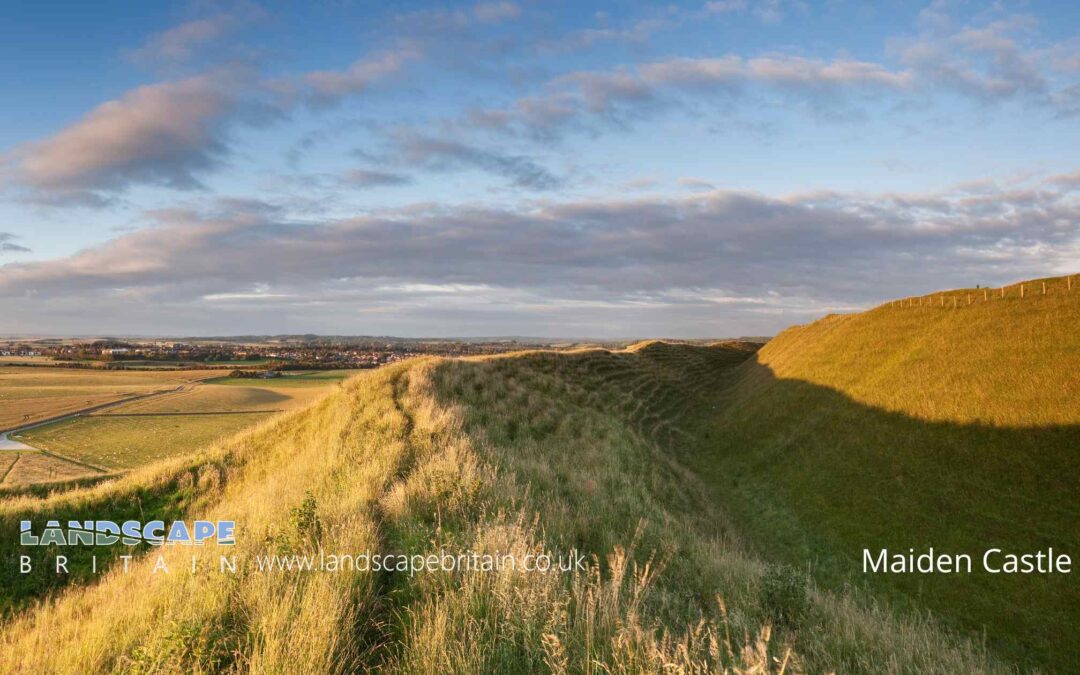Maiden Castle in Dorset is a prominent archaeological site known primarily for its extensive Iron Age hillfort. Situated on a chalk hilltop in the South Dorset Downs, the site overlooks the valleys of the Frome and South Winterbourne rivers. Maiden Castle’s historical significance spans multiple periods, with evidence of occupation dating back to the Early Neolithic period around 4000 BC. Early excavations by Edward Cunnington in 1884 and Sir Mortimer Wheeler between 1934 and 1937, along with further investigations in the mid-1980s, have revealed a complex history of human activity and settlement at the site.
The earliest features identified at Maiden Castle include a series of pits across the hilltop, associated with Early Neolithic flintwork. These pits suggest that the hilltop was cleared of woodland around 4000 BC. Shortly thereafter, a causewayed enclosure was constructed on the eastern plateau, defined by two concentric lines of ditches. This enclosure, covering an area of about 8 hectares, may have contained a long barrow and was associated with two human infant burials. By around 3500 BC, the enclosure had fallen out of use, and a significant bank barrow was constructed, partly overlaying the earlier structure. This barrow, measuring 546 meters in length, indicates continued human activity on the hilltop into the Later Neolithic and Bronze Age periods, albeit likely at a reduced scale.
The Iron Age hillfort, which Maiden Castle is best known for, overlies the earlier Neolithic structures. Initially marked by a single rampart, the fort underwent several phases of expansion and remodelling. By the mid-2nd century BC, the fort’s defences consisted of three banks and two ditches encircling the hilltop, with additional fortifications on the gentler southern slope. The interior of the hillfort was densely occupied, as evidenced by the remains of circular and rectangular huts, roads, storage pits, and various domestic and industrial structures. Artefacts uncovered from this period include large quantities of Iron Age pottery, sling stones, brooches, beads, and tools, along with around 50 human burials, some accompanied by grave goods.
Following the Roman conquest, the hillfort’s prominence declined as the Roman town of Durnovaria (modern Dorchester) emerged nearby. Nevertheless, during the 4th century AD, a Romano-Celtic temple was built at the eastern end of the fort. This temple, constructed of flint and limestone, featured a central cella surrounded by a corridor and was adorned with mosaic floors and stone tiles. The precise dedication of the temple remains unknown, though it likely honoured a pagan deity.
In the post-Roman period, Maiden Castle was used primarily for grazing livestock, with several dew ponds constructed to provide water. The hilltop saw agricultural use in the 17th century but has largely remained uncultivated in the past two centuries. Today, Maiden Castle stands as a testament to the long and varied history of human occupation and activity, reflecting the cultural and historical developments of the region over several millennia.

